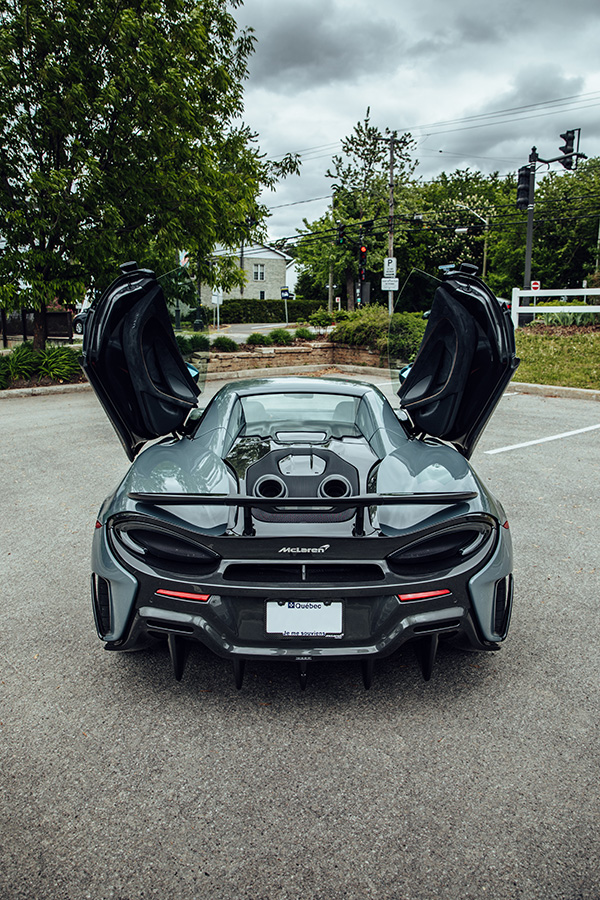
McLaren—just the name evokes speed, precision, and a long-standing legacy of excellence. What began as a passion-driven project on the racetrack has transformed into a brand synonymous with cutting-edge supercars. From its beginnings in the world of Formula 1 to crafting some of the most desirable road cars on the planet, McLaren's journey is one of relentless innovation and pursuit of perfection. But how did this racing giant evolve into a supercar manufacturer that rivals the likes of Ferrari and Lamborghini?
McLaren's Beginnings in the World of Racing
To truly appreciate McLaren's place in the world of supercars, it’s important to understand its origins in racing. McLaren was founded in 1963 by Bruce McLaren, a New Zealand-born racing driver and engineer. From the outset, McLaren's focus was on building a racing team that would dominate Formula 1. And dominate it did.
By 1966, McLaren had already started competing in Formula 1. Success followed quickly, with the team winning its first championship in 1974 with driver Emerson Fittipaldi. Over the years, the McLaren Formula 1 team has claimed multiple titles with legendary drivers like Ayrton Senna, Alain Prost, and, more recently, Lewis Hamilton.
This racing pedigree set the foundation for McLaren's future ventures into road car production. After all, when your roots are in Formula 1, the pursuit of perfection and speed becomes second nature.
The McLaren F1
It wasn’t until the early 1990s that McLaren shifted its focus to creating road cars, and they didn’t just dabble—they made a statement. The McLaren F1, introduced in 1992, is still revered as one of the greatest supercars ever made. It wasn’t just fast—it was revolutionary.
The F1 was the brainchild of McLaren’s then-technical director Gordon Murray, who designed the car with one goal: to create the ultimate driving machine. With its central driving position, carbon-fiber chassis, and naturally aspirated V12 engine, the F1 was a technological marvel of its time. And it set records, becoming the world’s fastest production car, a title it held for nearly a decade.
But beyond its impressive specs, the McLaren F1 represented the brand’s philosophy—taking everything it had learned from racing and applying it to road cars. The F1 wasn’t just about raw speed; it was about engineering perfection, balance, and pushing the boundaries of what a car could be.
The Birth of a Supercar Brand
While the McLaren F1 was a landmark achievement, it was just the beginning. In 2010, McLaren Automotive was officially born, marking McLaren’s formal entry into the world of high-performance road cars. This shift was significant—it wasn’t just a racing team dabbling in car production anymore. McLaren had become a fully-fledged supercar manufacturer.
The first car under this new division was the MP4-12C, introduced in 2011. With a lightweight carbon-fiber chassis and a twin-turbocharged V8 engine, the 12C set the tone for what McLaren would become known for: precision engineering, cutting-edge technology, and blistering performance. The 12C was soon followed by models like the 650S, which refined the formula even further.
What sets McLaren apart from other supercar manufacturers is its consistent focus on lightweight construction and aerodynamic efficiency, hallmarks of its Formula 1 heritage. McLaren cars aren’t just about horsepower—they’re about harnessing that power in the most efficient way possible, a philosophy that’s deeply rooted in racing.
Pushing the Limits of Performance
McLaren’s ambition to stay at the forefront of the supercar world has been most evident in its Ultimate Series, a collection of hypercars designed to push the boundaries of what’s possible. The P1, introduced in 2013, was McLaren’s first hybrid hypercar and one of the first of its kind globally. It combined a twin-turbo V8 with an electric motor to produce nearly 1,000 horsepower, offering both extreme performance and improved efficiency.
But McLaren didn’t stop there. The Speedtail, introduced in 2019, is a direct nod to the McLaren F1 with its central driving position and focus on top speed. Capable of reaching speeds over 250 mph, the Speedtail is a perfect example of McLaren’s relentless pursuit of innovation.
And then there’s the Senna, a track-focused hypercar named after the legendary Formula 1 driver Ayrton Senna. Every aspect of the car, from its extreme aerodynamics to its stripped-down interior, is designed with one thing in mind: absolute performance on the track.
McLaren's Approach to Everyday Supercars
While McLaren’s hypercars grab headlines, the brand has also made waves with more “accessible” supercars—if you can call a $200,000 car accessible. The McLaren Sports Series, which includes models like the 570S and 600LT, offers a more approachable entry point into the McLaren world while still delivering the brand’s signature performance and handling.
What’s impressive about McLaren’s approach is that even these “entry-level” models incorporate many of the same technologies and philosophies found in their more expensive cars. From the carbon-fiber construction to the twin-turbocharged engines, McLaren’s commitment to performance shines through in every model.
Looking to maintain the high performance of your luxury or exotic car? Trust German Motorworks for expert care that rivals any dealership. With our team, your vehicle will receive top-tier attention. Schedule your service today!